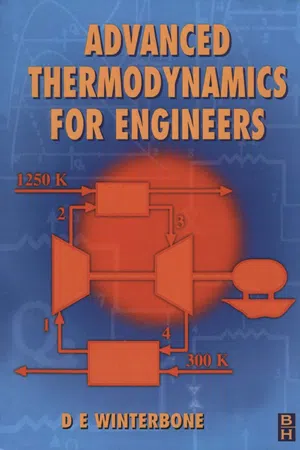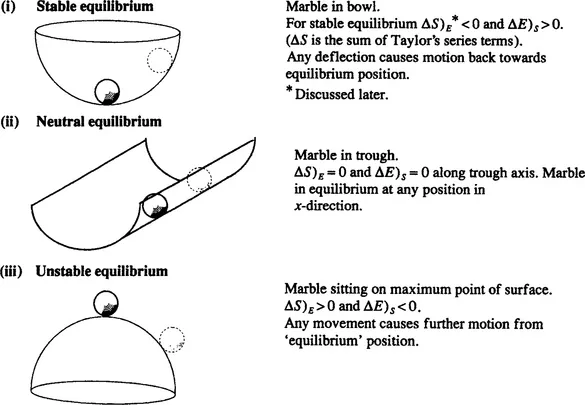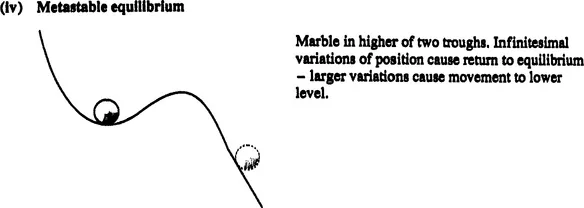
- 400 pages
- English
- ePUB (mobile friendly)
- Available on iOS & Android
Advanced Thermodynamics for Engineers
About This Book
Although the basic theories of thermodynamics are adequately covered by a number of existing texts, there is little literature that addresses more advanced topics. In this comprehensive work the author redresses this balance, drawing on his twenty-five years of experience of teaching thermodynamics at undergraduate and postgraduate level, to produce a definitive text to cover thoroughly, advanced syllabuses.
The book introduces the basic concepts which apply over the whole range of new technologies, considering: a new approach to cycles, enabling their irreversibility to be taken into account; a detailed study of combustion to show how the chemical energy in a fuel is converted into thermal energy and emissions; an analysis of fuel cells to give an understanding of the direct conversion of chemical energy to electrical power; a detailed study of property relationships to enable more sophisticated analyses to be made of both high and low temperature plant and irreversible thermodynamics, whose principles might hold a key to new ways of efficiently covering energy to power (e.g. solar energy, fuel cells). Worked examples are included in most of the chapters, followed by exercises with solutions. By developing thermodynamics from an explicitly equilibrium perspective, showing how all systems attempt to reach a state of equilibrium, and the effects of these systems when they cannot, the result is an unparalleled insight into the more advanced considerations when converting any form of energy into power, that will prove invaluable to students and professional engineers of all disciplines.
Frequently asked questions
Information
State of Equilibrium


* The difference between ΔS and dS




1.1 Equilibrium of a thermodynamic system






Table of contents
- Cover image
- Title page
- Table of Contents
- Copyright
- Preface
- Structure of book
- Symbols
- Chapter 1: State of Equilibrium
- Chapter 2: Availability and Exergy
- Chapter 3: Pinch Technology
- Chapter 4: Rational Efficiency of a Powerplant
- Chapter 5: Efficiency of Heat Engines at Maximum Power
- Chapter 6: General Thermodynamic Relationships: single component systems, or systems of constant composition
- Chapter 7: Equations of State
- Chapter 8: Liquefaction of Gases
- Chapter 9: Thermodynamic Properties of Ideal Gases and Ideal Gas Mixtures of Constant Composition
- Chapter 10: Thermodynamics of Combustion
- Chapter 11: Chemistry of Combustion
- Chapter 12: Chemical Equilibrium and Dissociation
- Chapter 13: Effect of Dissociation on Combustion Parameters
- Chapter 14: Chemical Kinetics
- Chapter 15: Combustion and flames
- Chapter 16: Irreversible Thermodynamics
- Chapter 17: Fuel Cells
- Bibliography
- Index